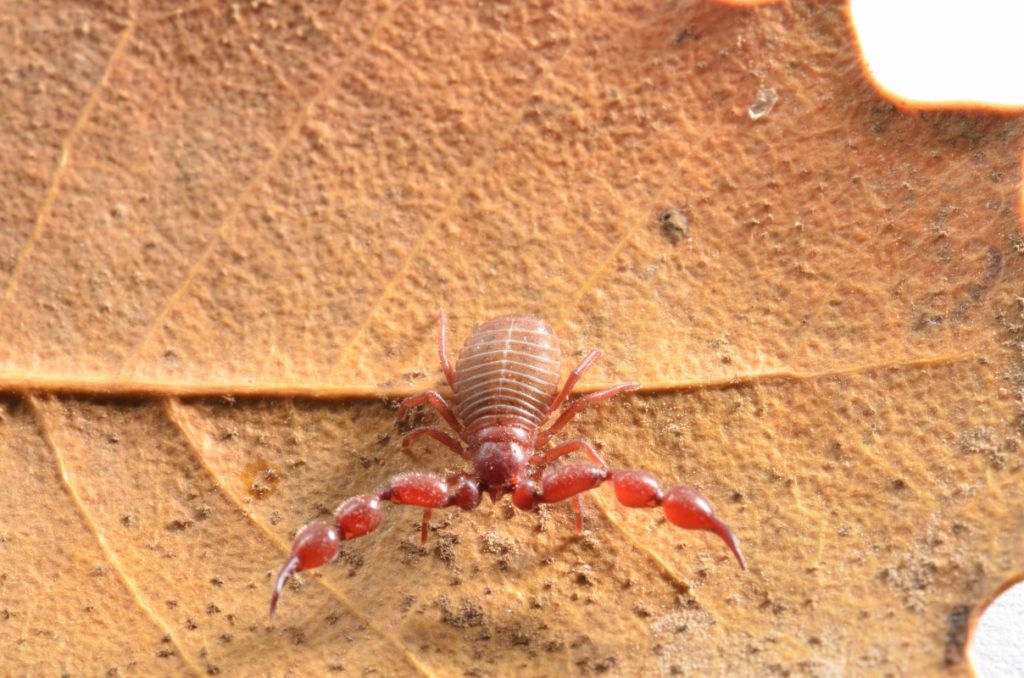
November 21, 2023 – Two previously undiscovered families of Pseudoscorpions (Syarinidae and Cheiridiidae) have been found by Hebrew University of Jerusalem researchers.
This pioneering research, published in Taxonomy, also introduces the first illustrated identification key based on morphological characteristics, accompanied by distribution maps. The study was conducted by Dr. Sharon Warburg and Dr. Efrat Gavish-Regev from the Hebrew University National Natural History Collections.
The researchers say that “The findings significantly enhance our comprehension of regional biodiversity, offering crucial resources for forthcoming ecological, taxonomical, and conservation endeavors.”
Positioned at the convergence of three continents, Israel’s distinct biodiversity has undergone systematic revision, resulting in an updated checklist featuring 61 pseudoscorpion species across 28 genera and fourteen families. Pseudoscorpions are tiny arachnids, two-eight millimeters in length, with four pairs of legs and one pair of relatively large pincer-like claws. Before this study, the pseudoscorpion fauna of Israel was believed to consist of twelve families, 26 genera, and 52 species, including several “subspecies.”
In future papers, several species will be comprehensively described in separate publications, further advancing the field of pseudoscorpion taxonomy.
Researchers:
Sharon Warburg1, Shlomi Aharon 1,2, Igor Armiach Steinpress1, Prashant P. Sharma3,4, Danilo Harms5 and Efrat Gavish-Regev 1,
Institutions
1) The National Natural History Collections, The Hebrew University of Jerusalem,
2) Department of Ecology, Evolution, & Behavior, The Hebrew University of Jerusalem,
3) Department of Integrative Biology, University of Madison-Wisconsin,
4) Zoology Museum, University of Madison-Wisconsin
5) Centre for Taxonomy and Morphology, Museum of Nature Hamburg–Zoology, Leibniz Institute for the Analysis of Biodiversity Change (LIB Hamburg), Martin-Luther-King-Platz 3, D-20146 Hamburg, Germany
Funding: Fieldwork in Israel was supported by the Israel Taxonomy Initiative (ITI) biodiversity survey grant to E.G.-R. and Y.L. The National Geographic Society Expeditions Council grant no. NGS-271R-18 was awarded to P.P.S., J.A.B. and E.G.-R. The study was supported by the US-Israel Binational Science Foundation grant no. BSF-2019216 to P.P.S. and E.G.-R.
Specimens were collected under a permit from the Israel Nature and Parks Authority.
Related articles
Saving Mikey
Beloved pet. Loyal friend. Brave solider. Survivor. Mikey is a dog in the IDF’s ‘Oketz’ Canine Unit. In November 2023, she suffered traumatic injuries in Gaza when a grenade exploded very near her. She was transferred to the Koret School’s Veterinary Teaching Hospital (VTH), the clinical arm
Scott A. Edelman
Scott A. Edelman is Chairman of Milbank LLP and a member of the firm’s Litigation & Arbitration Group. Mr. Edelman specializes in high-stakes, bet-the-company litigation, and trials across several substantive areas of the law, including securities, commercial and white collar. Over the course
Ann M. Kappler
As executive vice president, general counsel and chief compliance officer at Prudential Financial, Ann Kappler is the head of Law, Compliance, Business Ethics, and External Affairs, leading a global team of over 1100 employees. She is a member of the Executive Leadership Team and Operating and


